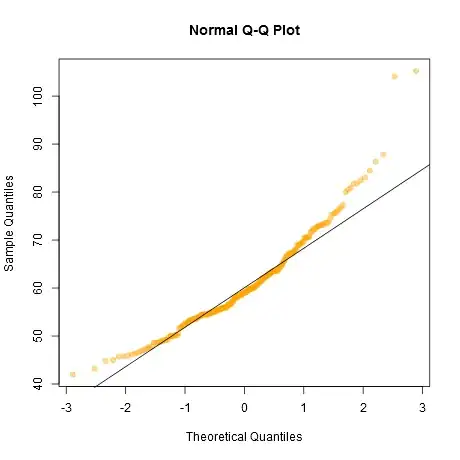I'm attempting to determine if store B is 'better' than store A. Let's say that the two stores are identical in every way except for the sales assistants. I'd like to determine if one store makes more money than the other.
The problem is a dearth of data. On any given day, for each store, I get the number of people who entered the store and the dollar amount purchased. That's it. The dollar amount purchased could represent multiple sales or a single purchase; I can't know the difference. Here is some data:
Day customers sales customers sales
Day 1 7 $- 9 $-
Day 2 25 $- 5 $-
Day 3 14 $- 13 $-
Day 4 8 $- 12 $-
Day 5 6 $- 17 $-
Day 6 20 $- 29 $-
Day 7 7 $- 27 $-
Day 8 30 $- 71 $-
Day 9 91 $- 141 $8.88
Day 10 30 $- 20 $-
Day 11 29 $- 10 $-
Day 12 136 $- 80 $-
Day 13 99 $3.96 132 $4.50
Day 14 116 $- 73 $-
Day 15 65 $17.84 60 $-
Day 16 95 $- 150 $-
Day 17 82 $- 115 $5.07
Day 18 172 $- 70 $1.88
Day 19 101 $5.21 195 $-
Day 20 190 $- 148 $-
Day 21 130 $- 162 $37.89
Day 22 92 $1.03 154 $4.01
Day 23 123 $- 97 $-
Day 24 158 $- 112 $-
Day 25 109 $- 128 $1.96
Day 26 206 $- 140 $-
Day 27 132 $- 134 $0.16
Day 28 180 $- 143 $1.77
Day 29 155 $- 129 $4.99
Day 30 80 $- 128 $5.86
Day 31 214 $- 156 $0.50
Day 32 392 $1.75 261 $-
Day 33 201 $- 132 $-
Day 34 225 $- 148 $3.24
Day 35 145 $- 204 $-
Day 36 126 $- 105 $
The 2nd and 3rd columns are customers and sales in Store A and the 4th and 5th columns are customers and sales in Store B.
The earnings are not normally distributed, so I can't run a t-test. With a lot more data perhaps they would become normally distributed, or I could take averages of a much greater data set, but this is the data that I have to work with right now.
Store B, however, appears to have a much greater incidence of non-zero values, which is a binomial distribution, so perhaps I could show % of non-zero sales values. Store A produced sales 14% of the days and store B produced sales 36% of the days. Following Test if two binomial distributions are statistically different from each other I could calculate the test statistic and compare it to the critical region value, but unfortunately each day does not have the same number of customers. Basically I don't have the result of every individual trial (a customer enters a store) and the trails are irregularly grouped.
So how would I go about showing significance here?

